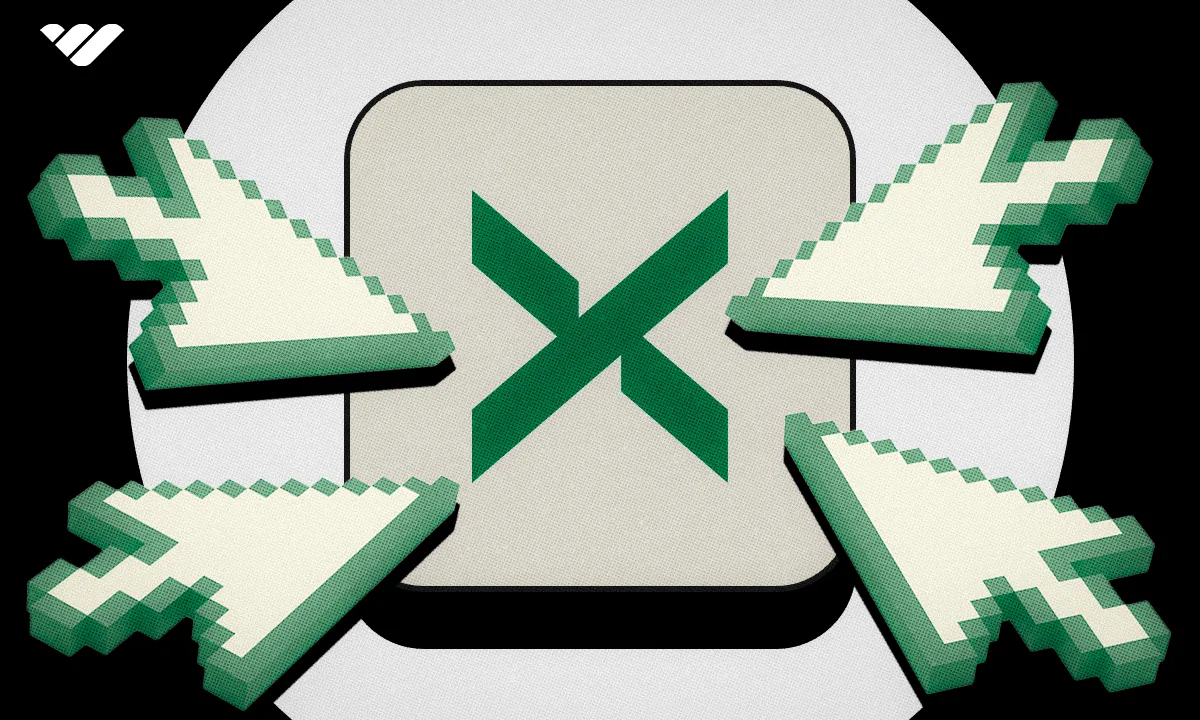Discover how StockX works and how to set up a seller account, create listings, and navigate the authentication process. Find out how to become a top seller on StockX with expert-level tips to maximize your earnings on the platform.
Key takeaways
- Use StockX's price history, volatility index, and size comparisons to identify profitable shoes and optimal selling times.
- Progress through five seller levels to reduce fees from 9% to 7%, significantly improving margins at high volume.
- List shoes on release day and ship quickly to capture peak prices when demand and premiums are highest.
StockX, the unofficial official stock market for sneakers, emerged in 2016 and has since become a go-to source for market research and those looking to cash out their shoe collections.
The platform brings transparency and data to the sneaker world with real-time pricing and sales information within an intuitive interface that gives a quick snapshot of how much a shoe is selling for currently and historically. Prices can be viewed in a convenient chart format in addition to a list view complete with sales times.
However, although it’s straightforward to use StockX as a place to perform efficient market research, becoming a top seller on the platform isn’t quite as easy. So, if you want to learn the tips and tricks that the top sellers on StockX are using to make the most of the platform to cash in big, we’ve got you covered in this guide.
We’ll cover everything from basic account setup and making a listing all the way to expert-level tips that top sellers use to make the most money with StockX.
How Does StockX Work?
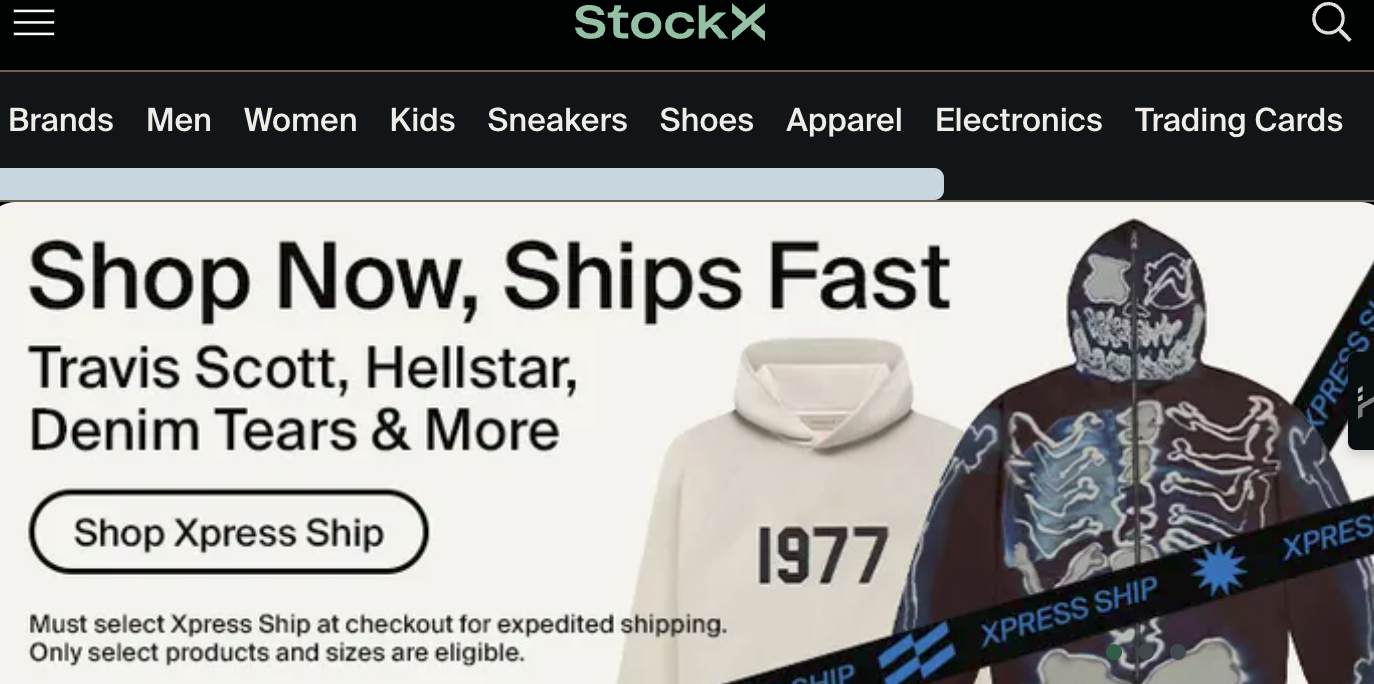
Different from other reselling platforms where items can be bought straight away for any price they are listed at, StockX works the same way institutional trading markets work: they match the bids from buyers to the asking prices of sellers. Both buyers and sellers can either pick an existing price that they are willing to pay, in which case a sale is made immediately.
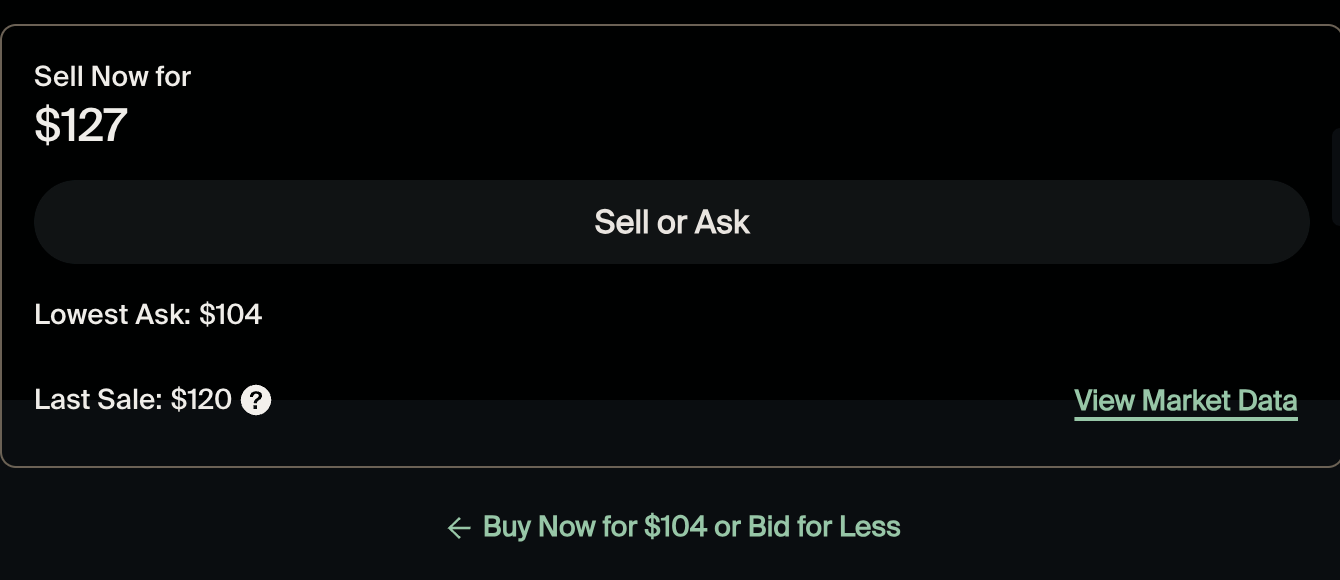
If a buyer or seller wants to make a bid or ask for a price that doesn’t match a public offer, their bid or ask will remain open until the market moves to meet their price or they decide to adjust it.
This system creates a dynamic marketplace where prices are constantly fluctuating based on real-time supply and demand, just like the stock market. The highest bid (what someone is willing to pay) and the lowest ask (what a seller is willing to accept) is public for any shoe.
Here’s how a sale on StockX happens with this system:
- Sellers will list their item by setting an “Ask” price.
- Buyers can place “Bids” on their desired item
- If a seller lists their ask at a current bid price for the size they have, a sale will be made immediately
- A buyer who puts out a bid will commit to purchasing a pair of shoes if they are listed by a seller at a matching ask price
- When a bid and ask are met, the seller ships their shoes to StockX for authentication
- Once the authentication is verified, StockX then ships the item to the buyer and releases the payment to the seller.
This bid-ask system also allows for more flexibility in pricing. In turn, this can potentially lead to better deals for both buyers and sellers, as they will suggest the number that they are happy to pay.
It also provides valuable market data that you can see in easy-to-read dated line charts that give you a good idea of how much a shoe is selling for currently compared to the past.
Setting Up a Seller Account on StockX
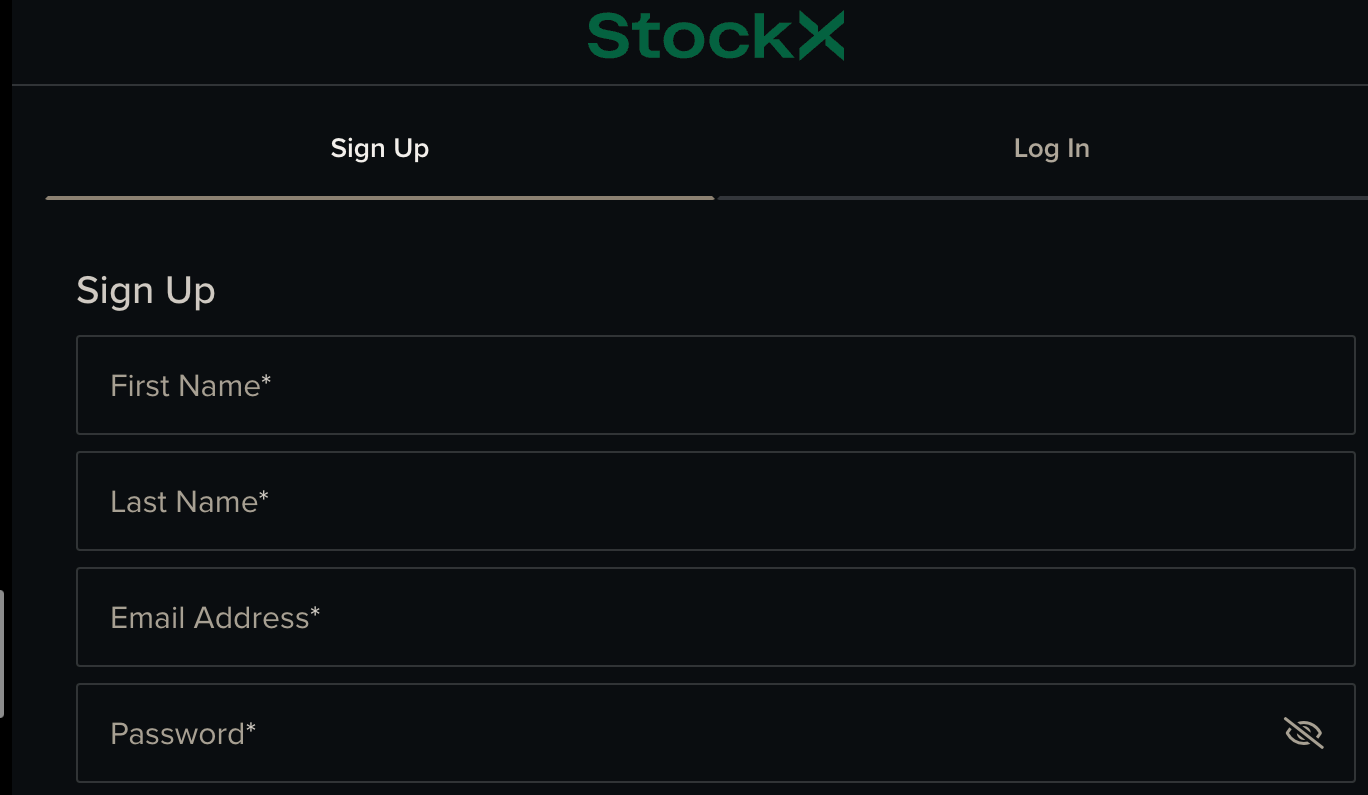
Getting started as a seller on StockX is possible with the following simple steps:
- Head to StockX.com and click “Sign Up”
- Put in your email, create a password, and verify your account
- Complete your profile with shipping and payout info
- Link a valid payment method for seller fees
This entire process is free. Once your account is set up, you can create listings that will become public on their active marketplace for buyers to put bids on.
Creating Listings on StockX
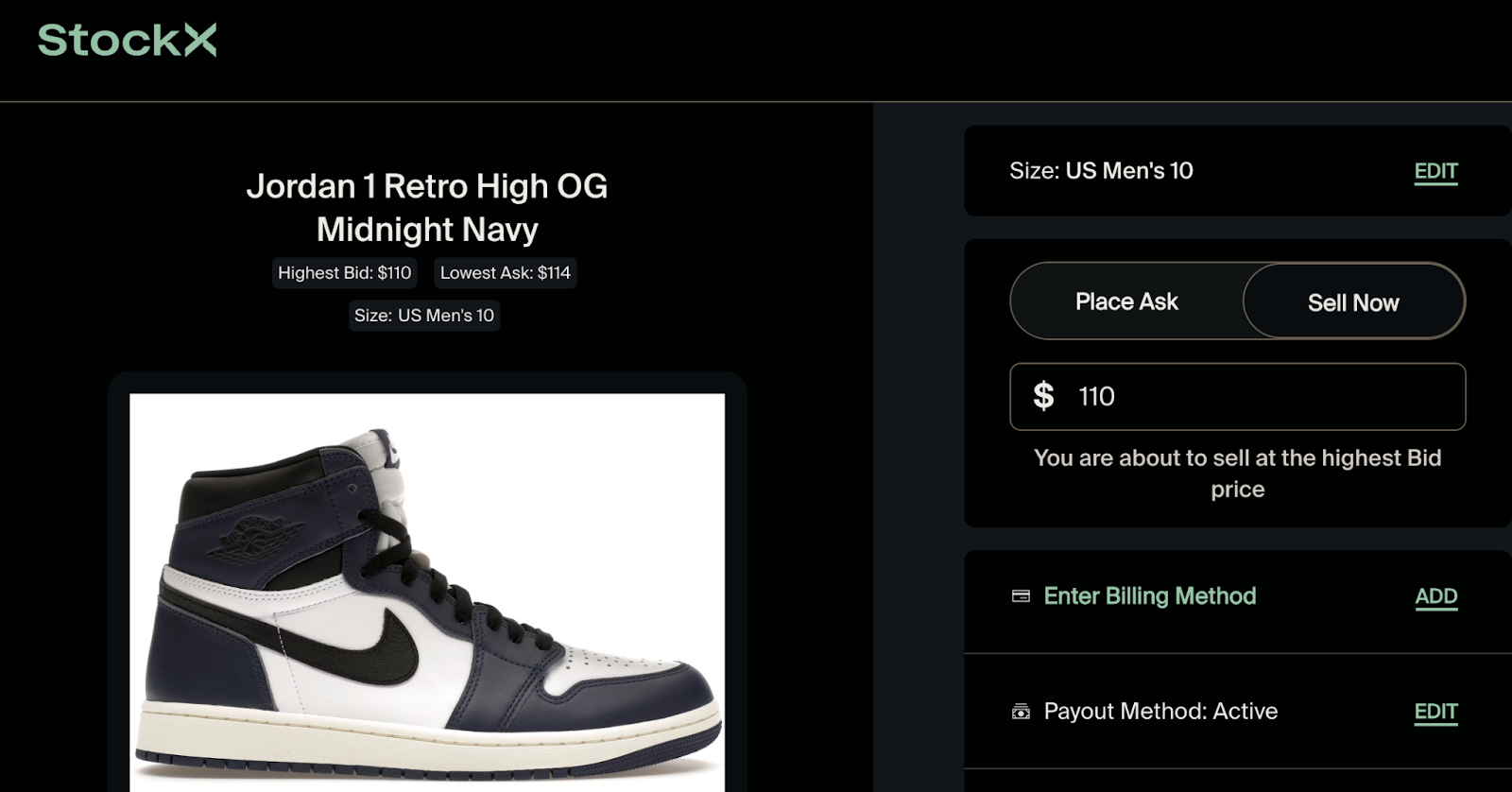
Unlike a traditional marketplace, StockX doesn’t have standalone listings. Instead, you will add your offer to the main page for the item you’re selling. This is a similar process to what Amazon resellers go through to create a listing.
Here’s how you create a listing on StockX:
- Search for the exact item you want to sell. If you don’t see the product, you won’t be able to manually input it to sell. However, you can head over to their Product Suggestion page to submit a suggestion for it; if enough sellers do this, an option will be made.
- Select your size. Shoes on StockX must be “deadstock”, which means they are new and unworn and include the original box, the box lid, and the box label indicating the shoe size.
- Set your ask price. If it matches a current bid, you can make an immediate sale.
- If your ask doesn’t meet a current bid, you’ll have to pick how long you want your ask to remain active (1-30 days).
StockX’s Authentication Process
All shoes sold on StockX must pass the platform’s authentication process. Here’s how it works:
- Once your shoes are sold, you’ll have up to 2 business days to ship them in for verification.
- StockX will then verify the authenticity and condition of the shoes to make sure they are deadstock.
- The verification process typically takes 1-2 days but can take up to 3-5 if further inspection is required by StockX’s Quality Assurance team.
Some sellers have reported this process taking less than 24 hours, but this can vary based on how popular the shoe you’re selling is. If your sneaker is determined to be fake, you can risk losing your seller account. Also, should your shoes not meet the deadstock qualifications, they will be sent back to you.
How to Become a Top Seller on StockX
Now that we have the basics of selling on StockX covered, it’s time to find out what the most successful sellers are doing differently from the casual flipper.
Here are some strategies that sellers use to rise to the top on StockX:
Leverage StockX’s data to assess the market
If your goal is to make big bucks as a shoe reseller on any platform, the very first step is to assess the market so you can approach it with a strategy. StockX is best known for this, so you should use it as a tool to do this research to give you an edge.
Here’s how you can make the most of StockX’s data:
- Study price history
You can get an idea if prices are climbing or falling based on the recent sales you can see in a line chart. This is particularly handy if you’re trading shoe models that were released one year or more ago, as you can more clearly see how the price is trending.
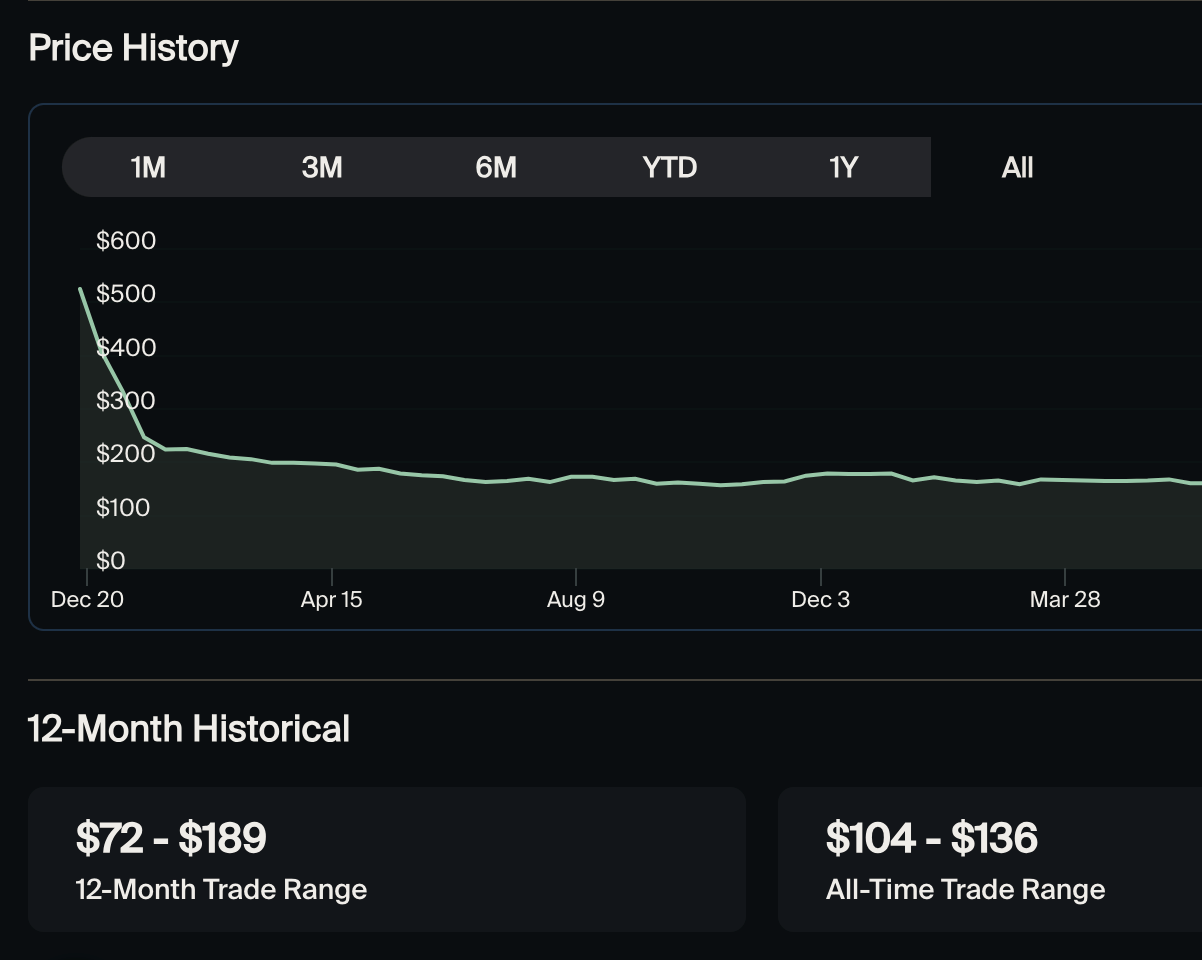
- Look at the price premium
StockX will show you the price premium in a percentage increase compared to its original retail price. You can use past premiums of similar upcoming models to predict how much more they’ll sell for. Pay attention to price action surrounding the day of the release if you plan to buy that day.

- Check the volatility index
StockX also has a volatility index, which indicates how much the shoe’s price fluctuates. The higher the volatility, the higher the potential profit if you buy on the lower end, but this also means increased risk should prices continue to dip. Low volatility will mean steadier and more predictable sales.
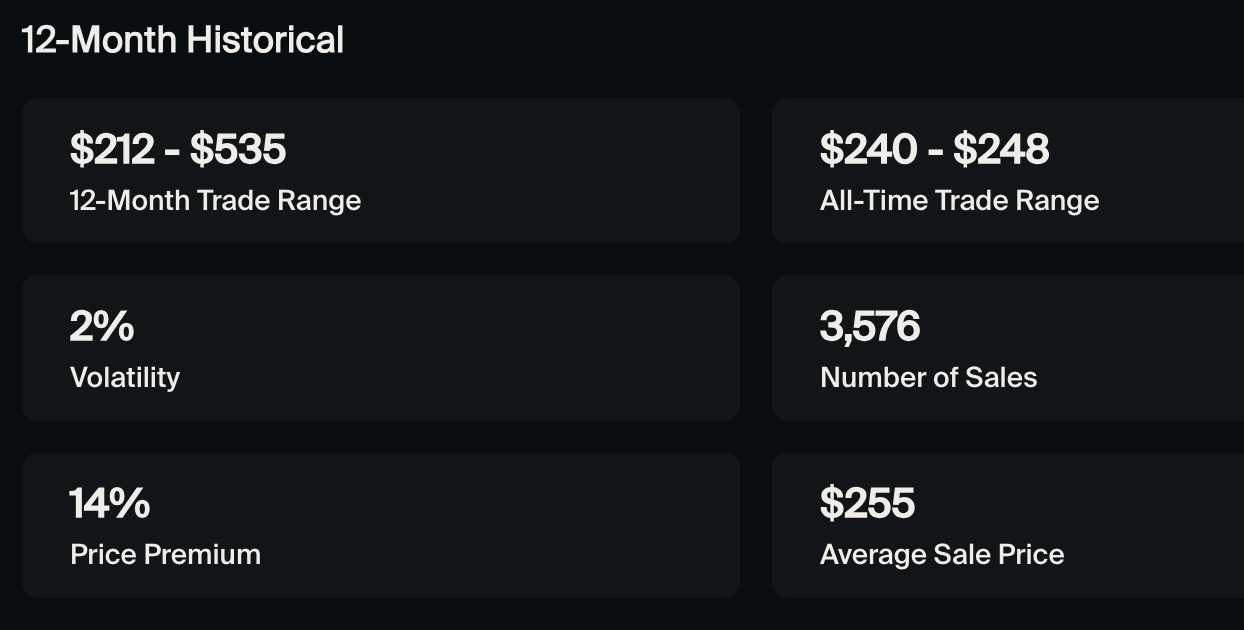
- Compare sizes
If you’re new to sneaker reselling, you might not know how much of a difference sizes can make in terms of resale price. For example, there are women’s shoe models that men like to wear, so the largest sizes available go for a huge premium over the smaller sizes. Toggle through each size to see the bid and ask and look at historic sales to see price premium and popularity.
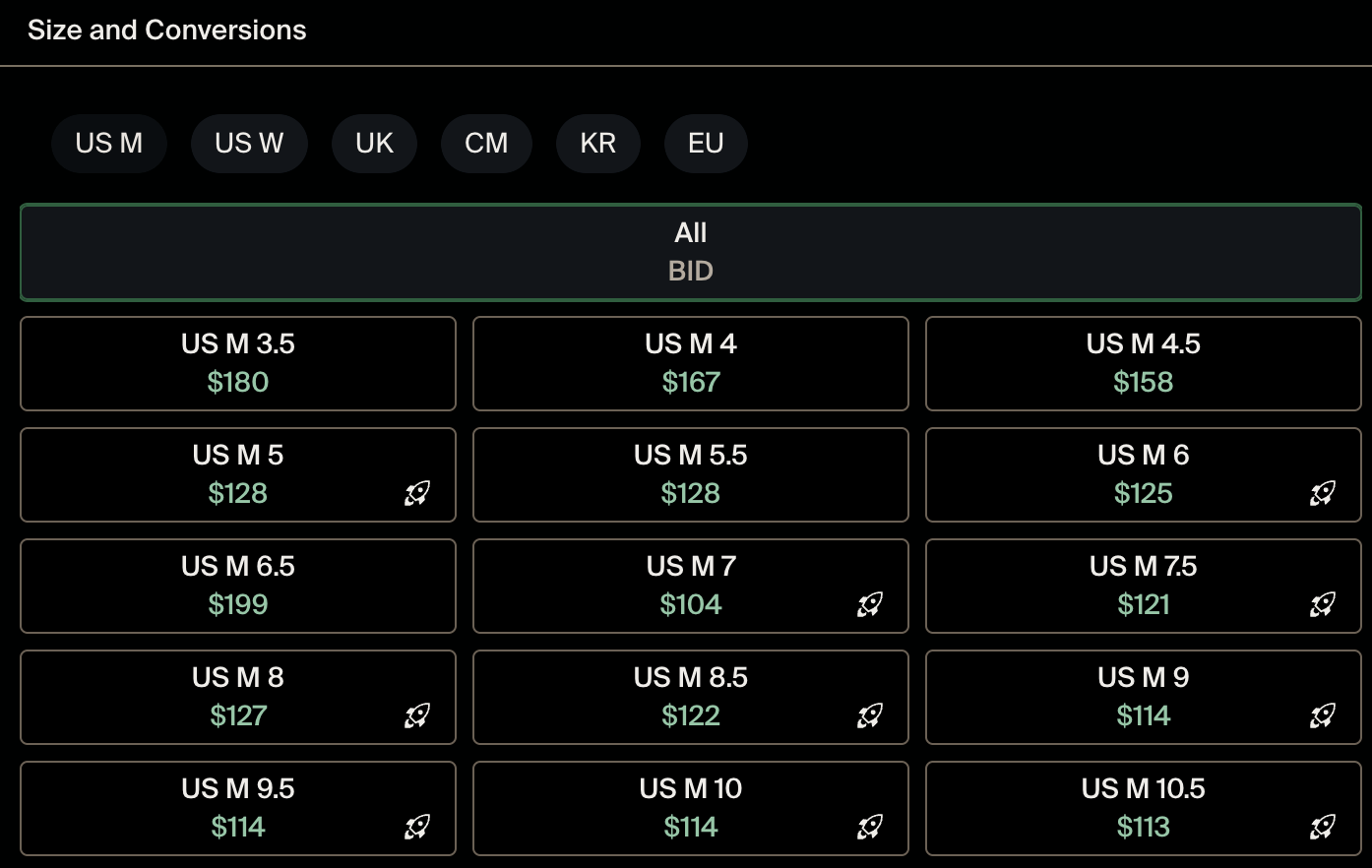
Source the best shoes
Your inventory is the lifeblood of your reselling business on StockX. Stay up to date with releases and join forums or groups, utilizing tools like monitors that can push you real-time information surrounding releases.
Be sure to compare prices to other platforms too, as there could be opportunities for cross-platform retail arbitrage–for example, buying on eBay and selling on StockX for a profit, or vice versa.
Effectively manage inventory
Be sure to manage your inventory like a pro, even if you’re just starting out with occasional sales. This means creating a spreadsheet to track inventory. Input relevant metrics like purchase prices and dates, plus your target and actual sales prices.
Pay attention to how fast your inventory moves and how often you moved your ask price, if at all. In addition to moving shoes on a shorter term basis, consider holding for profit, especially if it looks like you are buying the model at a low price compared to historic sals data.
How to Use StockX Like a Pro
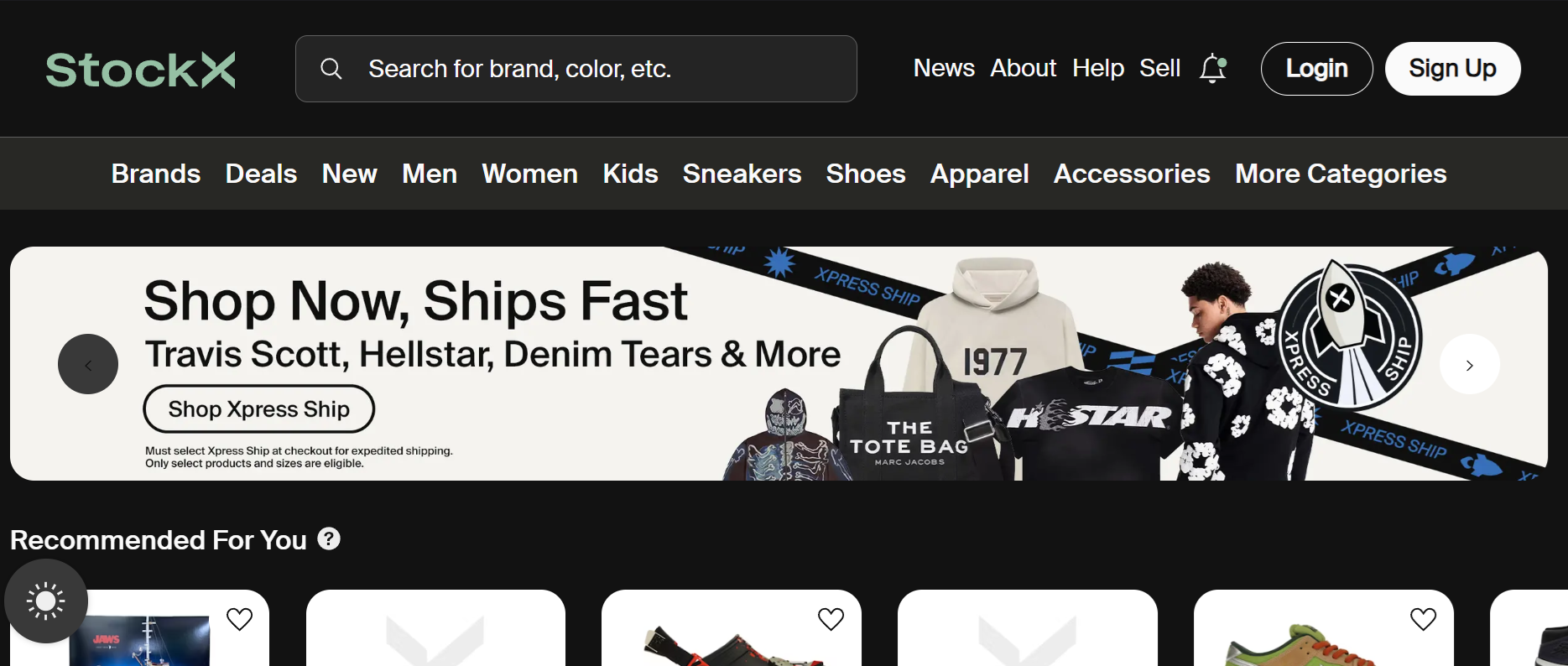
Beyond their sales data, StockX is stacked with tools and features that allow you to excel and thrive with their platform.
Here are some of the most relevant things to consider if you want to use StockX like a pro:
Understand StockX seller levels
StockX uses a level-based ranking system that determines your seller fees:
- Level 1: 0-3 sales
- Level 2: 4-29 sales, $1,500+ quarterly revenue
- Level 3: 30-99 sales, $5,000+ quarterly revenue
- Level 4: 100+ sales, $25,000+ quarterly revenue
- Level 5: 800+ sales, $100,000+ quarterly revenue
Each level comes with its own perks, mainly in the form of lower fees at a reduction of 0.5% per base transaction fee, starting at 9% for Level 1 and going down to 7% at Level 5.
While 2% might not seem like a lot, it can make a big difference in margins especially when you’re dealing in large volume. Understanding their seller levels can also give you healthy goals to shoot for.
Master the ask/bid system
Pro sellers on StockX know that the bid and ask of a shoe they are listing is dynamic, so rather than just accepting what is at the present moment, they’ll dive into relevant data to pick a good price. Sometimes this means accepting the current lowest ask to make a fast sale, and other times it can mean holding out for a better price.
Research sale prices on other platforms such as GOAT and eBay; if you see higher numbers, this is a good indicator that the current ask price on StockX will likely move upwards quickly, so you can price slightly higher and still get a fast sale.
Use the release calendar
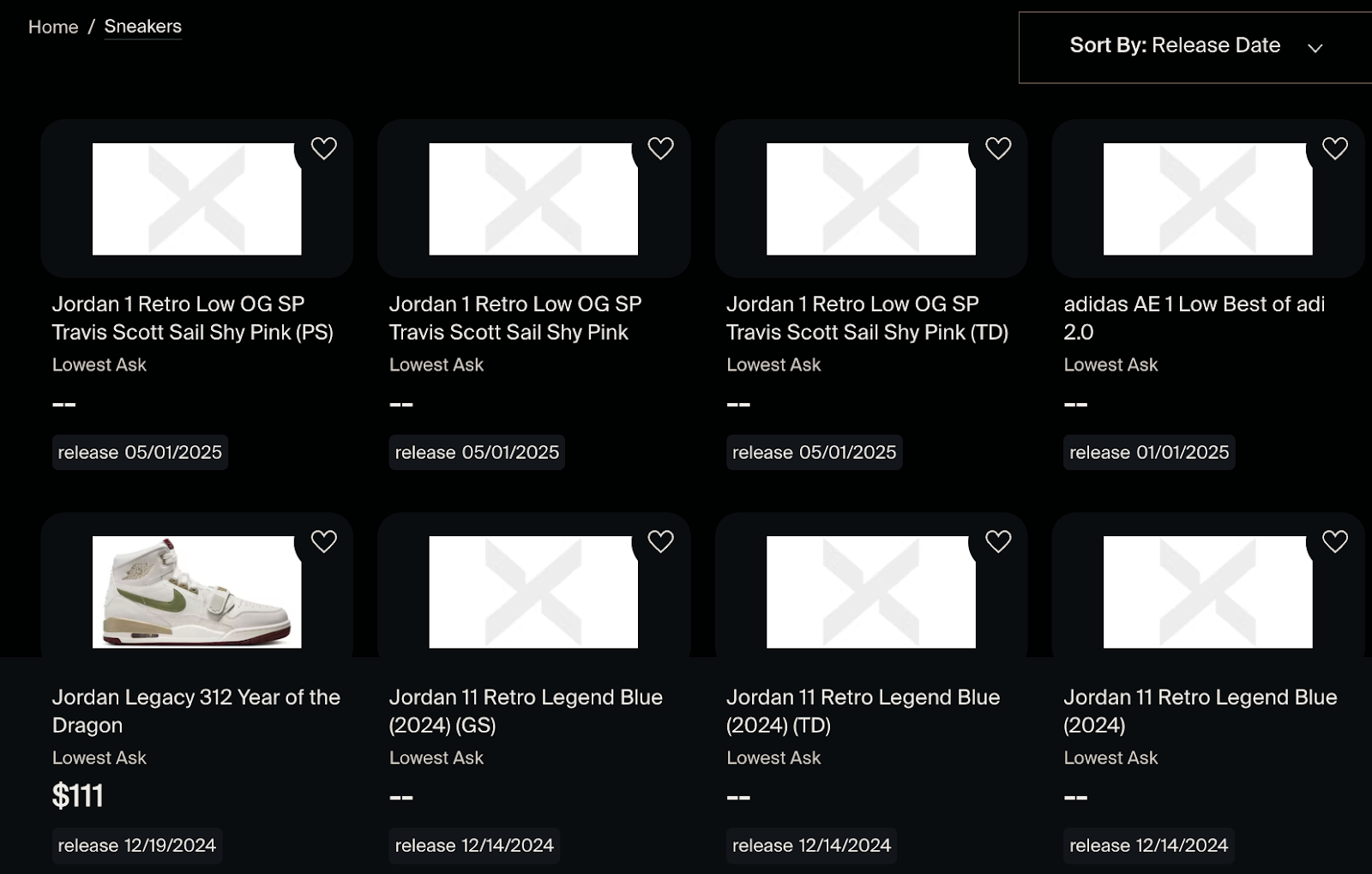
StockX has a handy release calendar that you can use to get a quick snapshot of hyped releases. Unlike larger shoe websites that cover a broader range of releases, including those that will have no resale value, StockX’s calendar covers only shoes most likely to sell at a premium.
Understand that as a general rule, prices will be highest on the days surrounding the release of the sneaker, so be sure to create your listings on the release date and get your shoes in hand to ship as quickly as possible so you can claim the highest prices and move inventory quickly.
In addition to release calendars, just about every top seller utilizes other cutting-edge tools, such as sneaker monitors found in private Discord servers. These can give sellers even more of an edge by providing real-time stock information, including lowkey but profitable restocks.
Set up price notifications
Rather than constantly checking the website, you can be more efficient and let the platform do all the heavy lifting by setting up price notifications.
You can set up price notifications with StockX several different ways:
Email notifications
StockX allows you to set up notifications via email for specific pricing events that you can configure to your liking. You can pick relevant events like price drops or new bids on a specific model to go to your inbox whenever they happen.
Push notifications
Make sure to install the mobile app if you want to get handy push notifications right to your phone.
IFTTT integration
StockX has a public API that you can use to create custom notifications with IFTTT (If This Then That). This is helpful because you can set up custom notifications of price movements in specific ranges and exact percentage or dollar amounts, something that unfortunately isn’t possible using standard StockX notifications.
Consider going pro
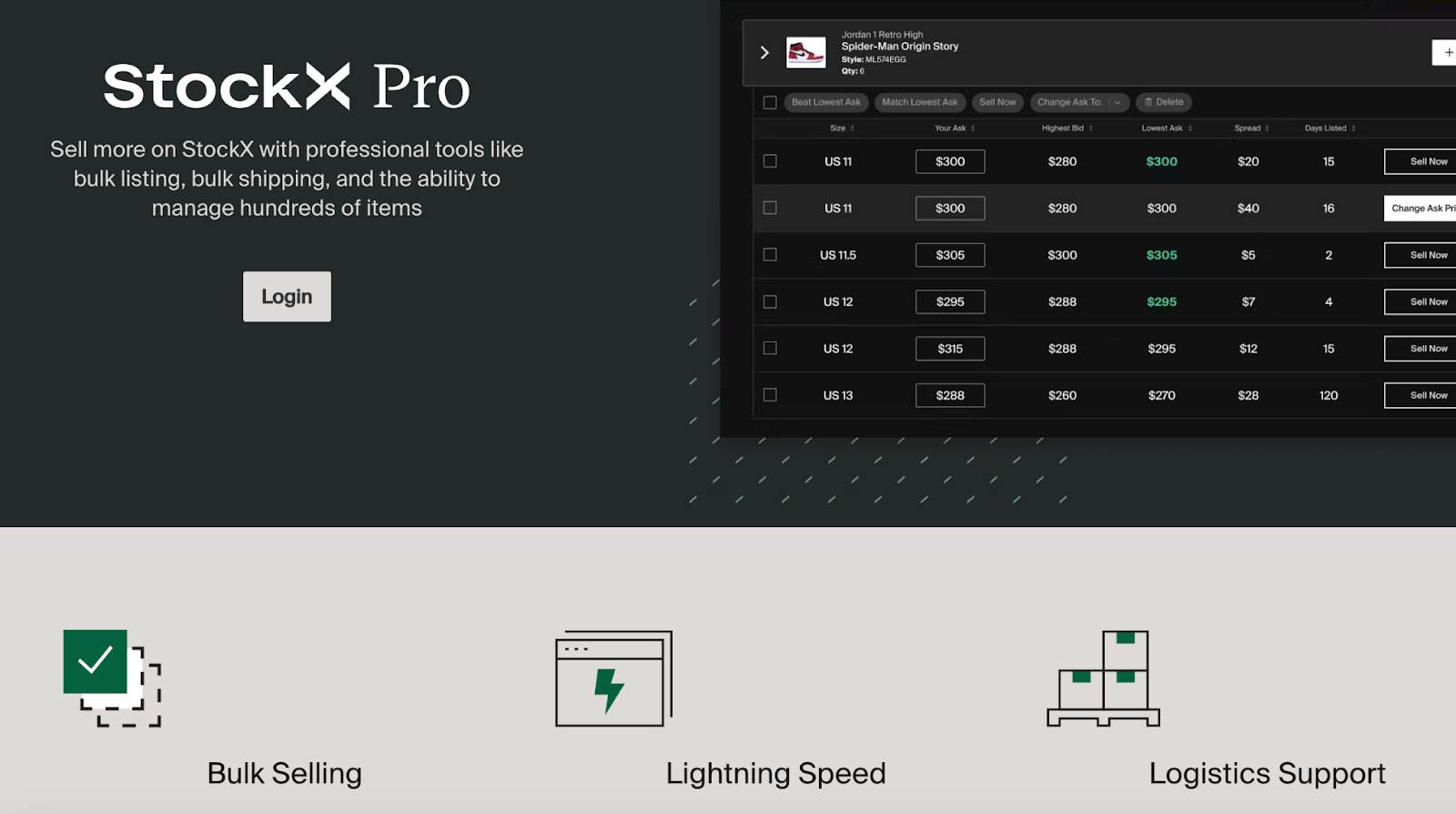
StockX offers a paid pro version of their platform, which gives you professional tools such as bulk listings, bluk shipping, and the ability to easily manage hundreds of items within a powerful dashboard on available to pro users.
If you’re a Level 3 seller seeing yourself quickly approaching Level 4 or 5, it’s time to consider going pro to take full advantage of your seller potential on StockX.
StockX Alternatives for Sneaker Resellers
StockX isn’t the only option out there for someone looking to cash in with kicks. Here are some worthy alternatives:
GOAT
GOAT is StockX’s primary competitor. It’s set up more like a traditional marketplace. Although it isn’t as data rich as StockX, you can still get an idea of how much a model is going for by browsing the platform.
In general, prices are higher on GOAT compared to StockX, and you can also sell used shoes. Unlike StockX, GOAT has an application process and a point-based seller rating that is arguably harsher than StockX’s Level system.
eBay
eBay has a massive userbase, and while not everyone there is looking for shoes, it remains a great option for sneaker resellers. This is particularly because of their recent push to reclaim their status as a preferred platform for sneakerheads.
The platform now offers an authentication service for sneakers sold at $100 or more, putting it on par with StockX and GOAT in terms of authenticity guarantee and thus buyer confidence. Additionally, eBay often has promotions that can eliminate seller fees, allowing you larger potential margin to work with as a seller. The best perk of eBay is that you can list any shoe model in any quantity or condition, which also makes it a great place to source shoes.
Grailed
If someone is looking for hyped streetwear or vintage items, they’ll often browse the digital shelves of Grailed. While it doesn’t have the same volume for shoes as StockX or GOAT, it’s an excellent option for selling rare, limited edition, or luxury models.
Grailed uses a traditional standalone listing format unlike StockX and GOAT, so you’ll be responsible for the photos and descriptions and can set any price you want.
Perhaps the biggest downside to Grailed is that they don’t have an in-house authentication service, meaning that you’ll need to convey or build trust with buyers. Consider selling cheaper items and gain positive feedback to show you are trustworthy before listing an expensive pair of shoes.
Master Reselling With Whop
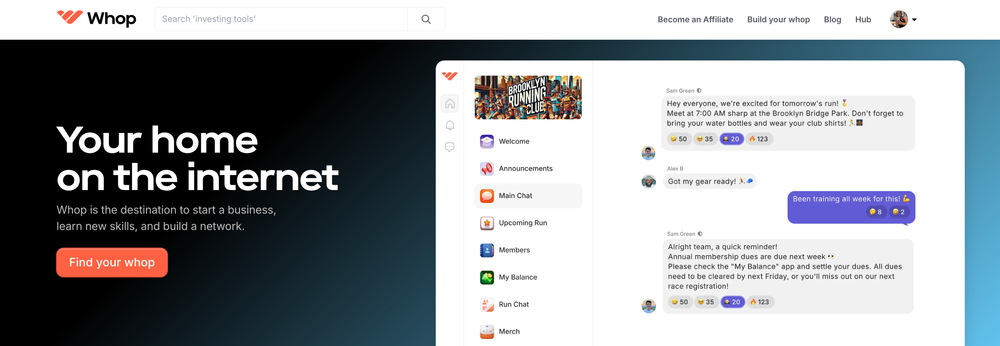
Reselling, whether it’s hyped sneakers or other currently profitable and trending items, is one of the best ways to create a side hustle or full-on business today.
Whop is home to a growing collection of thoroughly vetted, expert-led reselling communities, including groups that are focused specifically on sneakers. Other areas covered in these groups include tickets, gaming consoles, sports cards, and other hot collectibles, with some groups even offering freebies and marektplaces for cashing out items.
So, if you’re looking to start or level up your reselling game, head over to Whop today to explore everything these communities have to offer and kickstart your journey to reselling success.
FAQs
How do you become a top seller on StockX?
Becoming a top seller on StockX centers around consistency and setting up a system to continue to climb their seller levels for lower fees and other perks. Following basic but essential principles, like shipping on time, ensuring all items you sell pass authentication, and avoiding cancellations, will allow you to rise to the top when combined with a solid sourcing strategy that brings in profitable inventory regularly.
How does StockX verify sneaker authenticity?
StockX verifies sneaker authenticity with a dedicated team that every seller must ship the shoes to before they are sent to any buyers on the platform. The trained team will review and verify a sneaker’s authenticity quickly, typically within 1-2 days. Any shoe that fails their authentication process will be sent back to the seller, who will now risk losing their account.
Can I sell used shoes on StockX?
No, StockX is only for selling deadstock items, which means that they are brand new and unworn. For sneakers, this means also having the original box and labels, which not only verify authenticity but are important factors in maintaining maximum value. If you want to sell used shoes, top platforms include eBay, GOAT, and Grailed.
Can I sell shoes on StockX without a box?
As a rule of thumb, you can only sell shoes on StockX if they have their original and undamaged box, including the label that indicates the size on it. Some rare exceptions to this rule include ultra-rare or vintage sneakers, but for the vast majority of models that you’re allowed to list on the platform, a box is mandatory.
What shoes should I sell on StockX to make the most money?
Limited edition releases, collaborations, and classic models will typically yield the highest profits. Stick to brands like Nike’s Jordan and SB or adidas Yeezy in addition to celebrity collaborations. Remember that you can’t sell any shoe you want, it has to be a shoe that is available to list on the platform. This does work in your favor though, as StockX will only allow you to list shoes that are hyped and thus often have resale potential. You can also use the platform to research what shoes to sell if you don’t know where to start.
Which is better for sneaker resellers, StockX or GOAT?
Both StockX and GOAT have their strengths and weaknesses. For price research and a unique bid/ask system (which has the potential to benefit the seller), StockX is better. However, GOAT’s lower fees, marketplace for used sneakers, and generally higher prices mean that most sneaker resellers prefer GOAT for selling and StockX for market research.


